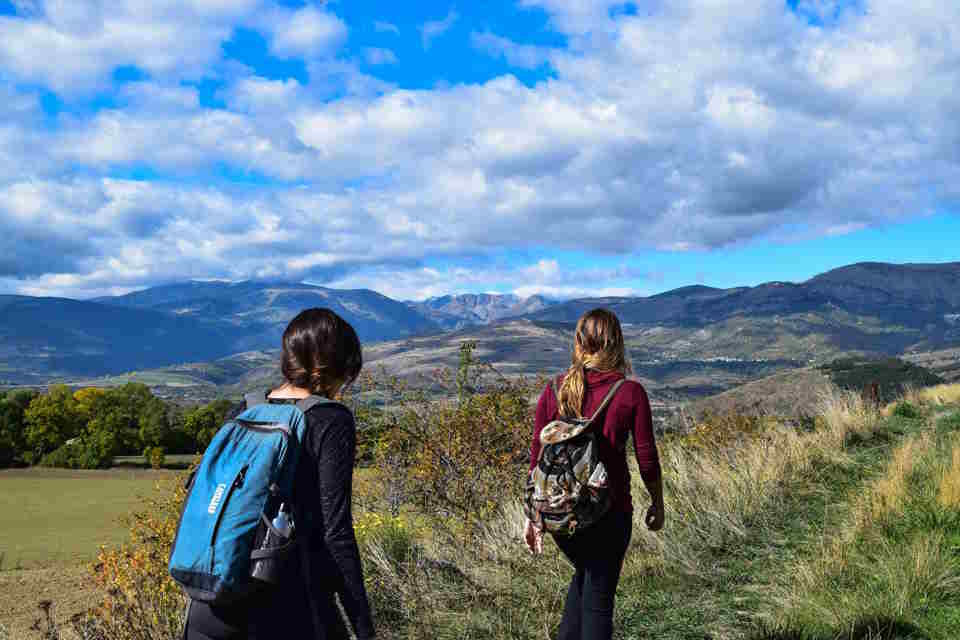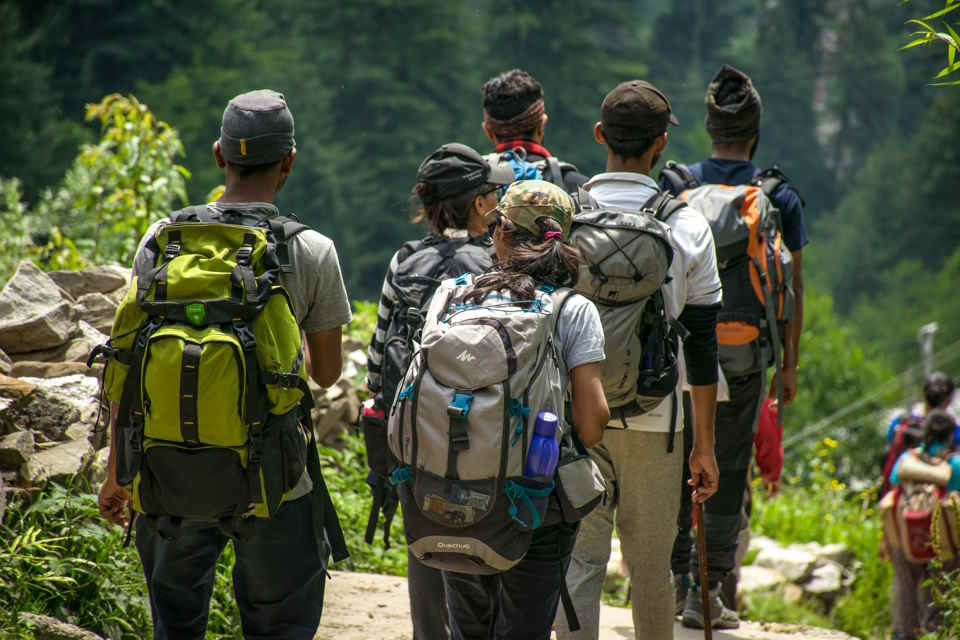Are you ready to embark on an unforgettable hiking adventure? Choosing the perfect hiking destination is the first step towards an incredible experience in nature. We will guide you through the essential factors to consider when selecting a hiking destination, from researching trail difficulty and terrain to creating a detailed itinerary. Additionally, I will provide valuable insights on packing essential gear and supplies to ensure you are fully prepared for your hiking expedition. Get ready to explore and discover the wonders of the great outdoors!
Choosing The Perfect Hiking Destination
Hiking is a wonderful outdoor activity that allows you to connect with nature, challenge yourself, and explore new places. But before embarking on your next hiking adventure, it’s important to choose the perfect hiking destination. With so many breathtaking places around the world, it can be overwhelming to decide where to go. But don’t worry, we’ve got you covered!
When choosing a hiking destination, the first thing you need to consider is the level of difficulty and terrain. Some trails are more suitable for beginners, while others are designed for experienced hikers looking for a challenge. Take into account your fitness level, hiking experience, and the amount of time you have for the trip. If you’re new to hiking, it’s probably best to start with an easy trail to build up your stamina and confidence.
Another factor to keep in mind when choosing a hiking destination is the scenery and natural beauty of the area. Do you prefer lush forests, towering mountains, or picturesque waterfalls? Research different locations and look at photos to get an idea of what each destination has to offer. Remember, the more awe-inspiring the landscape, the more memorable your hiking experience will be!
| Pros | Cons |
|---|---|
|
|
|
|
|
|
Lastly, it’s crucial to consider the accessibility and safety of the hiking destination. Research if there are any permits required, if there are any restrictions or closures due to wildlife or environmental concerns, and if there are any safety precautions you need to take. Be aware of your own limitations and choose a hiking destination that aligns with your abilities and comfort level.
Now that you know what to consider when choosing the perfect hiking destination, it’s time to start planning your next adventure! Whether you decide to hike through the stunning mountains of Yosemite National Park, explore the enchanting landscapes of the Scottish Highlands, or wander along the breathtaking coastal trails of the Amalfi Coast, remember to enjoy the journey and create memories that will last a lifetime.
Researching The Trail Difficulty And Terrain
When it comes to planning a hiking adventure, one of the most important factors to consider is the difficulty level of the trail and the type of terrain you will encounter. Researching these aspects beforehand can make a huge difference in ensuring a successful and enjoyable hiking experience. So, grab your hiking boots and let’s dive into the world of trail difficulty and terrain research!
Before embarking on any hiking trip, it’s crucial to understand the difficulty level of the trail you plan to conquer. Whether you’re a seasoned hiker or a beginner, knowing the difficulty rating of the trail will help you prepare both mentally and physically. Difficulty ratings often vary from easy to moderate, difficult, and even extreme. So, pay close attention to trail maps, online forums, and hiking guidebooks to get an idea of what you’re in for.
Take note of the terrain you will encounter along the trail. Is it mostly flat or filled with steep ascents and descents? Are there narrow paths or rocky sections that require careful navigation? Researching the terrain will allow you to pack the appropriate gear and choose the right hiking shoes. Keep in mind that different terrains may also require specific skills or equipment, such as trekking poles for stability on uneven ground or crampons for icy conditions.
Another important aspect to consider is the weather and climate of the hiking destination. Researching the trail’s seasonal variations will help you determine the best time to embark on your adventure. For example, some trails may be extremely challenging or even closed during certain seasons due to heavy snowfall or excessive rainfall. By understanding the weather patterns, you can avoid potential dangers and ensure a safe journey.
- Remember to consult fellow hikers or local experts who have previously tackled the trail you’re interested in. Their first-hand experiences and insights can provide invaluable information regarding the difficulty level and terrain conditions. Additionally, online hiking communities and forums are great platforms to connect with other hikers, seek advice, and share your excitement.
| Trail Difficulty | Terrain | Seasonal Variations |
|---|---|---|
| Easy | Flat and well-maintained paths | Varies depending on the location |
| Moderate | Some inclines and uneven terrain | Consider weather changes |
| Difficult | Steep ascents and descents, rocky sections | Avoid extreme weather conditions |
| Extreme | Challenging and unpredictable | Requires specialized gear and skills |
So, whether you’re planning a leisurely hike or seeking an adrenaline rush, researching the trail difficulty and terrain is an essential step. By understanding the challenges and characteristics of the trail, you can better prepare for the journey ahead. Remember to pack your sense of adventure, a positive attitude, and embrace the unknown. Happy hiking!
Creating A Detailed Itinerary
Creating a detailed itinerary is one of the most important steps in planning a hiking trip. It helps you stay organized, ensures you don’t miss out on any essential details, and maximizes your enjoyment of the adventure. Whether you’re a seasoned hiker or a beginner, having a well-thought-out itinerary can make a world of difference. So, let’s dive into the nitty-gritty of creating an itinerary that will have you covered from sunrise to sunset!
First and foremost, it’s crucial to research the hiking trail you’ll be embarking on. Look for reliable sources of information such as hiking guidebooks, online forums, and official park websites. Find out about the distance, the elevation gain, and any potential hazards along the trail. This will give you a good idea of what to expect and help you plan your itinerary accordingly.
Once you have a rough understanding of the trail, start mapping out your itinerary. Consider how many days you have for the hike and how much ground you’d like to cover each day. Break down your journey into manageable segments, taking into account your fitness level and the difficulty of the terrain. Remember, it’s always better to underestimate your abilities and leave room for rest and exploration along the way.
| Day | Location | Distance | Estimated Time |
|---|---|---|---|
| Day 1 | Trailhead to Camp A | 5 miles | 4 hours |
| Day 2 | Camp A to Camp B | 8 miles | 6 hours |
| Day 3 | Camp B to Summit | 6 miles | 8 hours |
| Day 4 | Summit to Trailhead | 5 miles | 5 hours |
As you create your itinerary, prioritize the must-see spots and essential landmarks along the trail. Highlight these key locations so you don’t miss out on any breathtaking views or memorable experiences. Additionally, consider the availability of water sources, campsites, and rest areas to ensure a smooth and comfortable journey. Remember that unexpected situations can arise, so always have contingency plans in place.
Finally, don’t forget to share your itinerary with a trusted family member or friend. This is an important safety measure, as it ensures someone knows your whereabouts and can raise the alarm if you don’t return as scheduled. It’s also a good idea to carry a printed copy of your itinerary with you and leave another one in your vehicle.
Packing Essential Gear And Supplies
When it comes to hiking, packing the right gear and supplies is crucial for a successful and enjoyable trip. From backpacks to water bottles, there are a variety of items that you should consider bringing along. But how do you know what to pack? Well, fear not! We will cover everything you need to know about packing essential gear and supplies for your next hiking adventure.
First and foremost, let’s talk about the most important item: your backpack. A sturdy and comfortable backpack is essential for carrying all your gear throughout the hike. Look for one with adjustable straps and multiple compartments to efficiently organize your items. Don’t forget to pack a rain cover to protect your gear in case of unexpected showers! Now that you have your backpack ready, let’s move on to clothing.
When it comes to hiking, it’s important to dress appropriately for the weather conditions and terrain you’ll be encountering. Layering is key here! Start with a moisture-wicking base layer to keep you dry and comfortable. Next, add an insulating layer to keep you warm, such as a fleece or down jacket. Finally, top it off with a waterproof and breathable outer layer to shield you from rain or wind. Don’t forget to pack extra socks and a hat to protect you from the sun!
- Now, let’s move on to the gear that will come in handy during your hike.
- First off, a good pair of hiking boots is a must! Look for ones that provide ankle support and have a sturdy sole for traction on different terrains.
- Don’t forget about trekking poles! These handy tools can help alleviate stress on your joints and provide stability while traversing steep or uneven paths.
- A navigation tool, such as a compass or GPS device, is essential to keep you on the right track. Even if you’re following a well-marked trail, it’s always good to have a backup plan.
- And let’s not forget about the most important thing – water! Hydration is key during outdoor activities, so make sure to pack enough water bottles or a hydration reservoir to keep yourself hydrated throughout the hike.
- Packing some snacks, such as energy bars or trail mix, is also a great idea. These will provide you with a quick energy boost when you need it the most.
- And last but not least, don’t forget to pack a first aid kit. You never know when a small mishap might occur, so it’s always better to be prepared.
| Essential Gear | Essential Supplies |
|---|---|
| Hiking boots | Water bottles or hydration reservoir |
| Trekking poles | Snacks |
| Navigation tool | First aid kit |
Now that you know what essential gear and supplies to pack, it’s time to start preparing for your hiking adventure! Remember, being well-prepared will not only ensure your safety but also enhance your overall experience. So, pack smart, dress appropriately, and get ready to explore the great outdoors!








